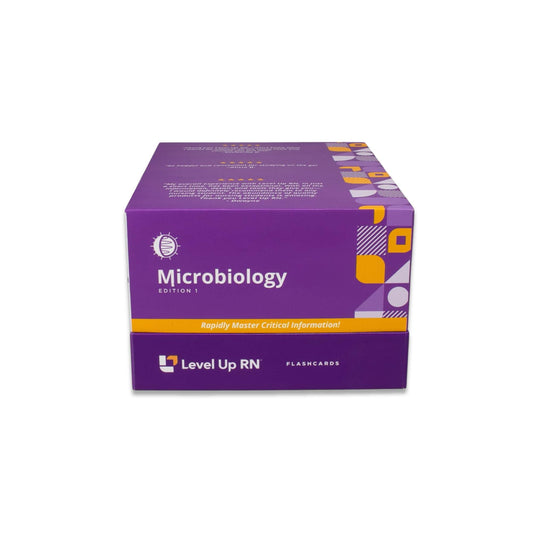Microbiology, part 55: Control of Growth - Antibiotics - Cell Wall Inhibitors
Antimicrobial drugs that inhibit cell wall synthesis. How cell wall inhibitors prevent the synthesis of peptidoglycan in the bacterial cell wall, and why cell wall inhibitors exhibit cell wall toxicity. Includes: penicillins, cephalosporins, monobactams, carbapenems, and polypeptide antibiotics.
Quiz Questions
Cell wall inhibitors prevent the synthesis of what in the bacterial cell wall?
Cell wall inhibitors prevent the synthesis of what in the bacterial cell wall?
Which bacterial enzyme inactivates the beta-lactam ring in penicillins?
Which bacterial enzyme inactivates the beta-lactam ring in penicillins?
Why are cell wall inhibitors considered selectively toxic?
Why are cell wall inhibitors considered selectively toxic?
Full Transcript: Microbiology, part 55: Control of Growth - Antibiotics - Cell Wall Inhibitors
Full Transcript: Microbiology, part 55: Control of Growth - Antibiotics - Cell Wall Inhibitors
Hi, I'm Cathy with Level Up RN. In this video, I will be discussing antimicrobial drugs that inhibit cell wall synthesis. And at the end of the video, I'm going to give you guys a little quiz to test your understanding of some of the key facts I'll be covering. So be sure to stay for that.
Cell wall inhibitors work by inhibiting the synthesis of peptidoglycan in the bacterial cell wall. This weakens the cell wall and eventually causes lysis or rupture of the cell. So human cells do not contain cell walls or peptidoglycan. So this is a good example of selective toxicity. These medications are toxic against bacterial cells but do not harm human cells.
Penicillin is the first cell wall inhibitor that we're going to talk about. And it was the first antibiotic that was discovered. Penicillins contain a beta-lactam ring, which prevents cross-linking of peptide chains during the synthesis of peptidoglycan. Penicillins are bactericidal, which means they kill the bacteria instead of just slowing down their growth. Older penicillins, such as penicillin G, tend to be narrow spectrum, meaning they are effective against a smaller subset of bacteria, whereas newer penicillins, such as amoxicillin, tend to be broad spectrum, meaning they are effective against a wider range of bacteria. Unfortunately, many bacteria are resistant to penicillins because they can produce an enzyme called beta-lactamase, which breaks down the beta-lactam ring in penicillins, which inactivates the antibiotic.
Cephalosporins, which are also cell wall inhibitors, are similar to penicillins in that they contain a beta-lactam ring. However, the beta-lactam ring is fused to a six-member ring as opposed to a five-member ring like it is with penicillins. This structural difference makes cephalosporins less likely to be inactivated by beta-lactamase as compared to penicillins. Cephalosporins are bactericidal and broad spectrum. Examples of cephalosporins include cephalexin and ceftriaxone.
Monobactams are another type of beta-lactam antibiotic. Unlike penicillins and cephalosporins, the beta-lactam ring in monobactams is not fused with any other ring. This makes monobactams more resistant to inactivation by beta-lactamases. Monobactams are bactericidal. They are effective against a wide range of gram-negative bacteria, but they are not effective against gram-positive bacteria. The only commercially available monobactam is aztreonam.
Carbapenems are another type of beta-lactam antibiotic. They have a fused beta-lactam ring structure, which helps to protect them from inactivation by many but not all beta-lactamases. Carbapenems are bactericidal and broad spectrum. They are typically used for serious life-threatening infections that are resistant to other antibiotics. An example of a carbapenem is imipenem, which is typically administered with another medication called cilastatin.
Lastly, we have polypeptide antibiotics. These antibiotics do not contain beta-lactam rings. Instead, they prevent cell wall subunits from being incorporated into peptidoglycan. Polypeptide antibiotics are bactericidal, and they can be either broad spectrum or narrow spectrum depending on the specific type of antibiotic. Examples of polypeptide antibiotics include vancomycin, which is an antibiotic that is typically administered intravenously for serious infections, as well as bacitracin, which is a topical antibiotic that is available over the counter.
All right, it's quiz time, and I have three questions.
Question number one. Cell wall inhibitors prevent the synthesis of blank in the bacterial cell wall.
The answer is...peptidoglycan.
Question number two. Which bacterial enzyme inactivates the beta-lactam ring in penicillins?
The answer is...beta-lactamase.
And question number three. Why are cell wall inhibitors considered selectively toxic?
The answer is...they are considered selectively toxic because they target the synthesis of peptidoglycan in bacterial cell walls. Human cells do not contain peptidoglycan or cell walls, for that matter.
All right. That's it for this video. I hope it was helpful. Take care, and good luck with studying.


